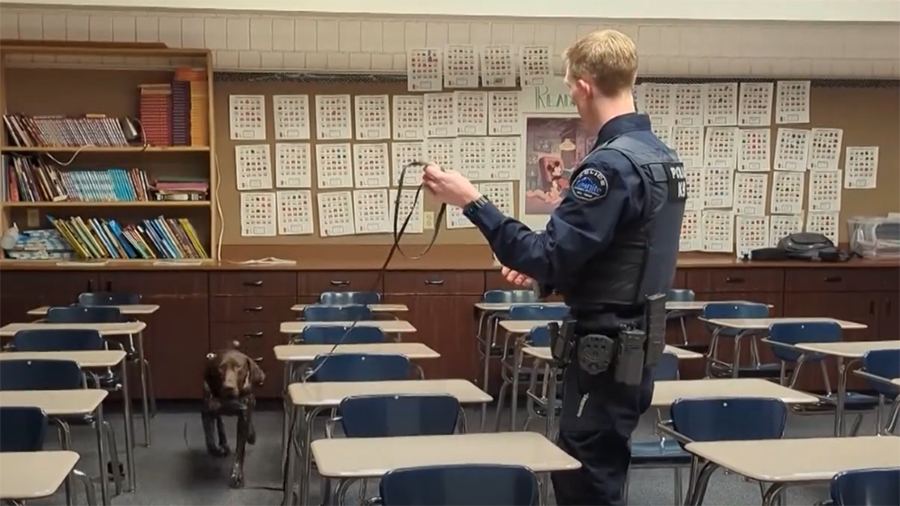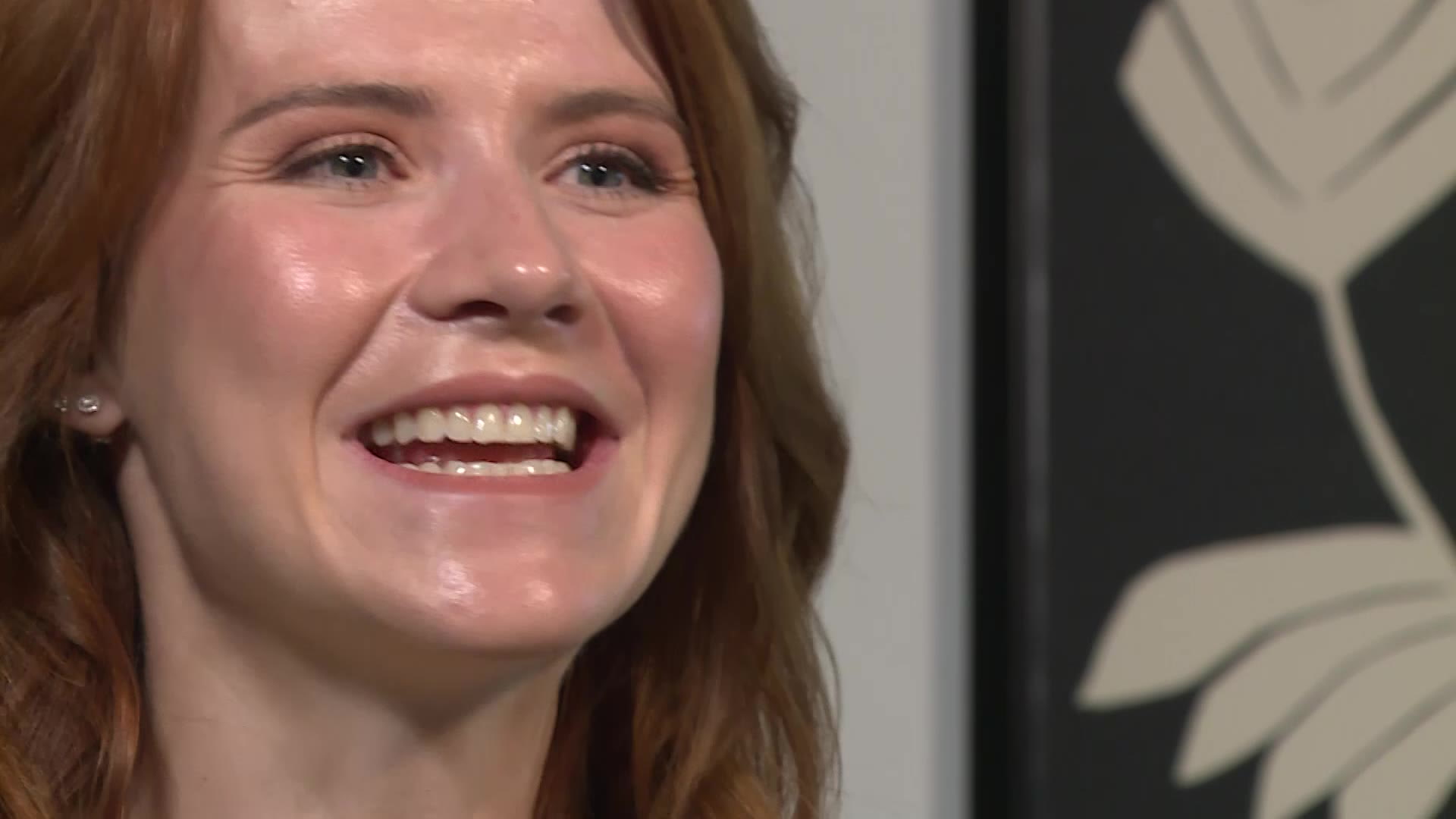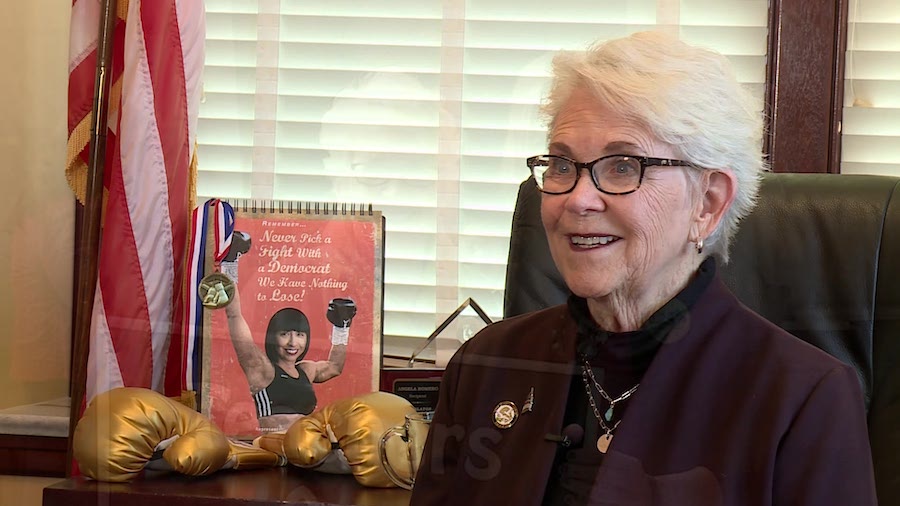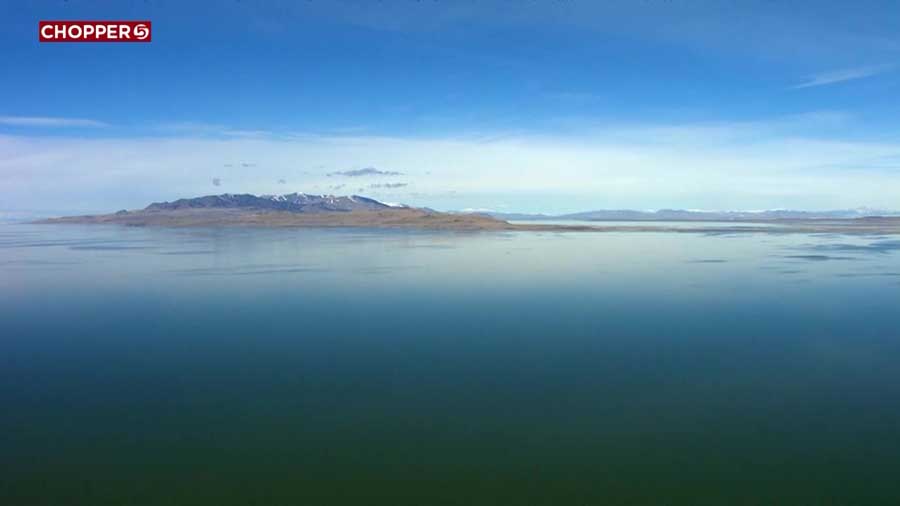KSL+: Jingle Dress Project Brings Healing Through Dance
Aug 6, 2021, 10:28 AM | Updated: 1:49 pm
Matt Rascon: Today on KSL+, during this disruptive and devastating pandemic, a group of Native Americans from Utah is bringing a different kind of healing to the people and land across the United States.
Eugene Tapahe: We went to do these things on our own, because we felt like this was what the land needed, what the people needed.
Matt Rascon: I’m Matt Rascon, and this is KSL+. And today we talk to Eugene Tapahe.
Eugene Tapahe: I have a few titles. Yeah. So yeah, my title would be landscape photographer.
Matt Rascon: A member of the Navajo Nation, and founder of the jingle dress project. Yeah, talk about that. This the jingle dress project? How did that get started?
Eugene Tapahe: So when COVID started in March of last year, it really was unknown to all of us of how long it would take to be able to get through it. My aunt, who was the last matriarch in our family, my mom’s older sister, she was in a nursing home on the Navajo Nation. And she got sick with COVID. And the first thing for us, we wanted to rush to her bedside and talk to her and be there with her. But we couldn’t. And after two weeks, she succumbed to COVID. And she died. And as Navajo people, we celebrate our family’s journey to the next world in four days. So we celebrate, and we send them on their way within four days. And culturally, that’s kind of our belief. And so when the people told us that they weren’t going to be able to release her to us within the four days, it really impacted our family
Matt Rascon: Through their grief and fear of the unknown, a dream, a vision, he has daughters and two family friends are now spreading through Native American tradition.
Eugene Tapahe: It was this a difficult time and, and along with that, not only was that difficult, but all my shows, my art shows, I do landscape photography full time. And they were canceling. And I was worried about how I was going to feed my family, how I was going to take care of my bills. And you know, it was just really a difficult time. And so when I returned back to the Navajo Nation and got back to Utah, that’s when I had the dream, I had the dream of this project.
In my dream, I was sitting in a field of tall grass out at Yellowstone National Park. And I was watching some bison grazing up on the hillside and the sun was setting and it was such a beautiful sight and area. And then as the dream was going, I started to hearing the sounds of the jingle dress. And then I saw these women coming into the grass and they all started dancing. And I heard the music start and then I just seemed like they were dancing with the bison. Like they were all united with it, with nature and, and I could feel myself healing, I could feel hope I could feel like you know that this was more than a dream. You know. As native people we have these dreams and a lot of times these dreams are meant for us. They’re like visions. And I really wanted to kind of just put this aside you know and just say “Oh, was this a beautiful dream” and move on. But it kept resonating with me to a point where I ended up telling my family. I told my daughters, Erin and Dion and my wife Sharon I said, you know, this is my dream, this is what I have this dream of. And they just were so spiritually lifted by this dream too. And I told them, I said, wouldn’t it be wonderful if we could make this dream, a reality to make it come true. And that’s, that’s where it started.
Matt Rascon: Native American communities often use jingle dress dances to promote healing.
Erin Tapahe: Before we dance, we’re all very thoughtful and kind of in a reverence manner, because of the healing and the purpose of behind the stance and what it represents. And what it is.
Matt Rascon: Dancers are always women. They wear traditional clothing laced with jingles. And they dance with a clear mind and heart, praying while they dance with all of their intentions focused on that healing they believe needs to take place,
Erin Tapahe: No matter how hot or cold it is, we are there for prayer and we have a purpose. So then we kind of hit that like, determined kind of phase. Dancing is hard, especially on the calves in the lower knees, just because of the style of dancing and we’re on our toes. But as we’re dancing, we are so focused in thought that it kind of… those thoughts overcome the wariness that our bodies and kind of how tired we are. So we just are dancing.
Matt Rascon: Sometimes this is done at a powwow with hundreds of people, sometimes just within a family. Eugene didn’t realize it at the time, but his dream and the project reflected almost exactly how this tradition came about.
Eugene Tapahe: We just thought that this needed to happen. And so that’s that’s kind of how the project kind of got together.
Matt Rascon: But it turns out that this, this had, there’s a history behind that, right? Yeah, with this dance, even back to the Spanish flu.
Eugene Tapahe: Right. So the correlation between COVID pandemic and the Spanish Flu back in 1918. I didn’t know that there was a correlation with the jingle dress dance. I didn’t know this until like, maybe a month or so into our project. I was approached by a good friend of mine, her name is Brenda Childs. And she was a professor at the University of Minnesota. And she’s a historian and her big project she was working on is the history of the jingle dress, and the origin of it. And so when she heard what I was doing, she called me and we talked. And she asked me if I knew the origin of the jingle dress. And I said, I really don’t. I said, I know it’s a healing dress. And that’s why we’re doing what we’re doing. And she said, Well, back in 1918, a father had a dream because his daughter was sick with the influenza, the Spanish flu. And so he went to sleep and he had a dream about the jingle dress. And in his dream, it was revealed to him how to make the dresses, and how to dance the dance. And so when he woke up the next morning, he told his wife, I want you to make four dresses. And that that was the cool part about the whole thing is he said four dresses. And he says I want to make four dresses, because I want each of the dresses to represent the sacred colors of the Mille Lacs Ojibwe people. So they made one dress in each of the colors. And so when the dresses were done, they got four young ladies there to dance the dance. And the tail goes that, you know that at the end of the day, that in the evening, that the young girl was healed and was dancing with the girls. And so it was really a great feeling to feel that there was this correlation between the dream and the way that we were doing things. And so that was that was really a great way to be able to give back.
And it was a wonderful opportunity also for us because Brenda Childs invited us to come to Minnesota and to dance there. And it was such a spiritual feeling for the girls and honored for an honor for them to be able to be invited by you know, the Mille Lacs people to come and to dance where the first dance was danced. You know, that was like the pinnacle of what we were doing and we were just so honored to be able to be invited.
Matt Rascon: Sunni, Erin, Dion, JoAnni and Eugene then spent the next several months driving around the country, from the Great Lakes, to Yellowstone, to Washington, DC, to the Pacific Northwest, bringing healing through dance.
Eugene Tapahe: At the beginning, it was really private. And when we went to Redwood Forests, we just danced by ourselves at Redwood Forest. You know, we did the honor dance and the healing dance there. We went to do these things on our own, because we felt like this was what the land needed and what the people needed.
Matt Rascon: How many states have you taken this to?
Eugene Tapahe: Oh, my gosh, we’ve kind of made an estimate that we’ve done about 30,000 miles on the road. We just got back from Seattle and Oregon. The Northwest Pacific up there, and but we’ve been to New York on the East Coast, we’ve been to the west coast. And we’ve been to South Dakota and North Dakota, we’ve been to Minnesota to Chicago, California, I mean, we’ve been to a lot of areas.
Matt Rascon: And Eugene says the healing they have seen is not just physical.
Can you describe the reaction and what you guys feel and what your daughters and others feel when what you get out of this dance?
Eugene Tapahe: So just to bring it back to what our project really is about. It’s about taking the healing power of the jingle dress to the land. And at the time, during COVID, when everyone’s staying home, there were reports and the land was actually healing, because no one was driving and everyone was staying home. And when we went out to Yellowstone National Park during pandemic, there’s no cars there. There’s nobody there. And it was really a wonderful feeling. Because we saw the calves of the bison, roaming really close to the road, we saw wolverines, we saw otters, we saw things that I hadn’t seen in like six years of going to the National Park and, and that was the thing that we really wanted to be sure of. You know, it’s called Art Heals: The Jingle Dress Project. And that’s the thing I wanted to do is to bring this philosophy of art, combining different arts to be able to make people feel hope and to heal, the art of photography, the art of the dance, the art of the regalia, the art of song, and then also the art of the landscape, of Mother Nature. We wanted to bring all these elements together and unite them. It’s not just pretty pictures of the girls. But it’s a composition of all this unity of what’s around them.
And we wanted to bring the prayers to the people who were suffering from COVID, and also to the prayers of the ancestors that once walked those lands, and who lived there before we were here. And, and so we did a lot of that through our land recognition. So everywhere we went, we made sure to let people know which land we were on, which tribal land this was. And so when we started doing that, and we started talking about Native issues, because even before the pandemic, I was a huge advocate for Missing Murdered Indigenous Women. And along the way, the girls have these scarves, these red scarves, and we made red masks. So that when we did these dances, we were honoring our sisters, and mothers and those that have been missing in those dances also.
We’re doing it in such a beautiful way. I think that’s the impact that was the positivity of this project is why people loved it. They loved the images, they loved the strength of seeing the girls, they loved the beauty of the landscape. And it just took off. It was just phenomenal for us. We didn’t want to do this for publicity. We didn’t want to do it for our show. This is a healing project. And we’re getting a lot of people right now who are asking us to perform. And I tell them we’re not a performance act. We’re doing this for healing. And so there’s a difference between performance and healing and honoring and doing honoring songs and dances. So I think that’s the part that’s really been effective with during the pandemic is that we gave people hope. And we had a lot of people who have written us and called us and we even get mail, you know, like, mail, the actual mail in the mail, you know, sent to us that just love the project. And they’ve been asking us to dance for their parents who have COVID, or dance for my sister, she died of COVID. You know, and those are the things that motivate us to do, what we’re doing is that we are actually have people that want healing, and they need to set this time.
Every single one of those jingles is representative of prayers. So depending on how many jingles you have, that’s how many prayers are going to be answered, and how many prayers are going to be heard. And I always tell the girls, I said, you know, if you hold one jingle and you shake it, it doesn’t make a sound. Because it has no bell, it’s not a bell, it’s a jingle. So if you put the jingles together, and you shake them together, they make a beautiful sound. And that’s the thing that I really love about this project is that I tell them, I said, When our prayers all in one, and we’re all together, and we’re making the same prayers, that they make a beautiful sound. So if all of us as human beings can be like that, we can all pray together and be united. We can all make a beautiful sound that we all can be able to feel and to unite the world. And I think that’s the great thing about this project is that we’re doing it in a beautiful way. We’re not trying to yell at people. We’re trying to tell them, it’s okay to be different. It’s okay to have different values, as long as we respect one another and care about each other, and take care of one another that we can get through this together.
Matt Rascon: The project is on social media and is funded by donations on their website, jingledressproject.com. That does it for us this week here on KSL+, I’m Matt Rascon. We’ll see you again next week.












